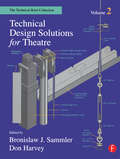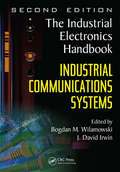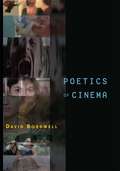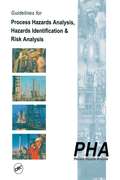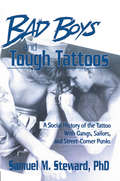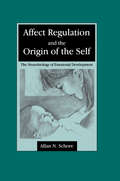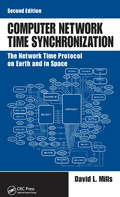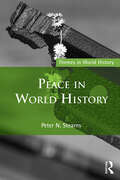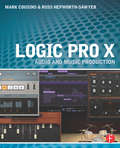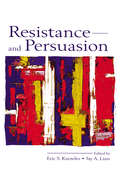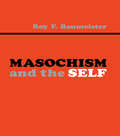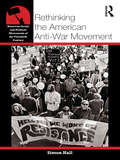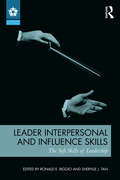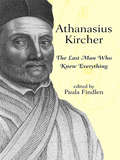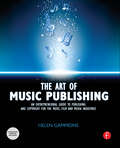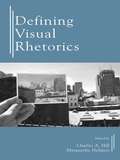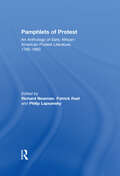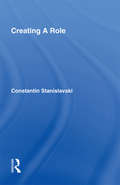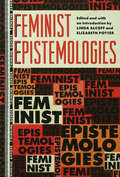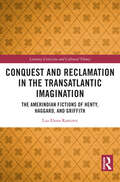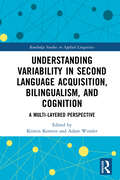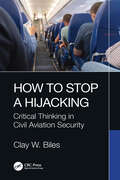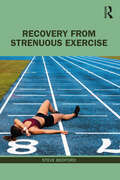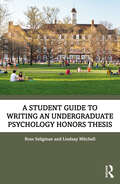- Table View
- List View
Technical Design Solutions for Theatre: The Technical Brief Collection Volume 2
by Bronislaw J. SammlerThe Technical Brief is a collection of single-focus articles on technical production solutions, published three times a year by the prestigious Yale School of Drama. The primary objective of the publication is to share creative solutions to technical problems so that fellow theatre technicians can avoid having to reinvent the wheel with each new challenge. The range of topics includes scenery, props, painting, electrics, sound and costumes. The articles each describe an approach, device, or technique that has been tested on stage or in a shop by students and professionals. Some articles included are: Building Authentic Elizabethan Ruffs; Simple and Inexpensive Stained Glass; A Quick-Load Floor Pulley Design; A Simple Approach to Stretching Drops; Flexi-Pitch Escape Stairs; Spot-Welding Scrim with Sobo; Handrail Armatures for a Grand Staircase; The Triscuit-Studwall Deck System; A Frameless Turntable; Stand on Stage: Minimum Weight, Maximum Effect; A Self-Paging Cable Tray; Roller Chain Turntable Drives; A Bench-Built XLR Cable Tester
Industrial Communication Systems
by Bogdan M. Wilamowski and J. david IrwinThe Industrial Electronics Handbook, Second Edition, Industrial Communications Systems combines traditional and newer, more specialized knowledge that helps industrial electronics engineers develop practical solutions for the design and implementation of high-power applications. Embracing the broad technological scope of the field, this collection explores fundamental areas, including analog and digital circuits, electronics, electromagnetic machines, signal processing, and industrial control and communications systems. It also facilitates the use of intelligent systems—such as neural networks, fuzzy systems, and evolutionary methods—in terms of a hierarchical structure that makes factory control and supervision more efficient by addressing the needs of all production components. Enhancing its value, this fully updated collection presents research and global trends as published in the IEEE Transactions on Industrial Electronics Journal, one of the largest and most respected publications in the field. Modern communication systems in factories use many different—and increasingly sophisticated—systems to send and receive information. Industrial Communication Systems spans the full gamut of concepts that engineers require to maintain a well-designed, reliable communications system that can ensure successful operation of any production process. Delving into the subject, this volume covers: Technical principles Application-specific areas Technologies Internet programming Outlook, including trends and expected challenges Other volumes in the set: Fundamentals of Industrial Electronics Power Electronics and Motor Drives Control and Mechatronics Intelligent Systems
Poetics of Cinema
by David BordwellBringing together twenty-five years of work on what he has called the "historical poetics of cinema," David Bordwell presents an extended analysis of a key question for film studies: how are films made, in particular historical contexts, in order to achieve certain effects? For Bordwell, films are made things, existing within historical contexts, and aim to create determinate effects. Beginning with this central thesis, Bordwell works out a full understanding of how films channel and recast cultural influences for their cinematic purposes. With more than five hundred film stills, Poetics of Cinema is a must-have for any student of cinema.
Guidelines for Process Hazards Analysis (PHA, HAZOP), Hazards Identification, and Risk Analysis
by Nigel HyattThis unique manual is a comprehensive, easy-to-read overview of hazards analysis as it applies to the process and allied industries. The book begins by building a background in the technical definition of risk, past industrial incidents and their impacts, ensuing legislation, and the language and terms of the risk field. It addresses the different types of structured analytical techniques for conducting Process Hazards Analyses (PHA), provides a "What If" checklist, and shows how to organize and set up PHA sessions. Other topics include layout and siting considerations, Failure Modes and Effect Analysis (FMEA), human factors, loss of containment, and PHA team leadership issues.
Bad Boys and Tough Tattoos: A Social History of the Tattoo With Gangs, Sailors, and Street-Corner Punks 1950-1965
by Samuel M. Steward, PhDExplore the dark subculture of 1950s tattoos!In the early 1950s, when tattoos were the indelible mark of a lowlife, an erudite professor of English--a friend of Gertrude Stein, Thomas Mann, Andre Gide, and Thornton Wilder--abandoned his job to become a tattoo artist (and incidentally a researcher for Alfred Kinsey). Bad Boys and Tough Tattoos tells the story of his years working in a squalid arcade on Chicago’s tough State Street. During that time he left his mark on a hundred thousand people, from youthful sailors who flaunted their tattoos as a rite of manhood to executives who had to hide their passion for well-ornamented flesh. Bad Boys and Tough Tattoos is anything but politically correct. The gritty, film-noir details of Skid Row life are rendered with unflinching honesty and furtive tenderness. His lascivious relish for the young sailors swaggering or staggering in for a new tattoo does not blind him to the sordidness of the world they inhabited. From studly nineteen-year-olds who traded blow jobs for tattoos to hard-bitten dykes who scared the sailors out of the shop, the clientele was seedy at best: sailors, con men, drunks, hustlers, and Hells Angels. These days, when tattoo art is sported by millionaires and the middle class as well as by gang members and punk rockers, the sheer squalor of Bad Boys and Tough Tattoos is a revelation. However much tattoo culture has changed, the advice and information is still sound: how to select a good tattoo artist what to expect during a tattooing session how to ensure the artist uses sterile needles and other safety precautions how to care for a new tattoo why people get tattoos--25 sexual motivations for body artMore than a history of the art or a roster of famous--and infamous--tattoo customers and artists, Bad Boys and Tough Tattoos is a raunchy, provocative look at a forgotten subculture.
Affect Regulation and the Origin of the Self: The Neurobiology of Emotional Development
by Allan N. SchoreDuring the past decade a diverse group of disciplines have simultaneously intensified their attention upon the scientific study of emotion. This proliferation of research on affective phenomena has been paralleled by an acceleration of investigations of early human structural and functional development. Developmental neuroscience is now delving into the ontogeny of brain systems that evolve to support the psychobiological underpinnings of socioemotional functioning. Studies of the infant brain demonstrate that its maturation is influenced by the environment and is experience-dependent. Developmental psychological research emphasizes that the infant's expanding socioaffective functions are critically influenced by the affect-transacting experiences it has with the primary caregiver. Concurrent developmental psychoanalytic research suggests that the mother's affect regulatory functions permanently shape the emerging self's capacity for self-organization. Studies of incipient relational processes and their effects on developing structure are thus an excellent paradigm for the deeper apprehension of the organization and dynamics of affective phenomena. This book brings together and presents the latest findings of socioemotional studies emerging from the developmental branches of various disciplines. It supplies psychological researchers and clinicians with relevant, up-to-date developmental neurobiological findings and insights, and exposes neuroscientists to recent developmental psychological and psychoanalytic studies of infants. The methodology of this theoretical research involves the integration of information that is being generated by the different fields that are studying the problem of socioaffective development--neurobiology, behavioral neurology, behavioral biology, sociobiology, social psychology, developmental psychology, developmental psychoanalysis, and infant psychiatry. A special emphasis is placed upon the application and incorporation of current developmental data from neurochemistry, neuroanatomy, neuropsychology, and neuroendocrinology into the main body of developmental theory. More than just a review of several literatures, the studies cited in this work are used as a multidisciplinary source pool of experimental data, theoretical concepts, and clinical observations that form the base and scaffolding of an overarching heuristic model of socioemotional development that is grounded in contemporary neuroscience. This psychoneurobiological model is then used to generate a number of heuristic hypotheses regarding the proximal causes of a wide array of affect-related phenomena--from the motive force that drives human attachment to the proximal causes of psychiatric disturbances and psychosomatic disorders, and indeed to the origin of the self.
Computer Network Time Synchronization: The Network Time Protocol on Earth and in Space, Second Edition
by David L. MillsCarefully coordinated, reliable, and accurate time synchronization is vital to a wide spectrum of fields—from air and ground traffic control, to buying and selling goods and services, to TV network programming. Ill-gotten time could even lead to the unimaginable and cause DNS caches to expire, leaving the entire Internet to implode on the root servers.Written by the original developer of the Network Time Protocol (NTP), Computer Network Time Synchronization: The Network Time Protocol on Earth and in Space, Second Edition addresses the technological infrastructure of time dissemination, distribution, and synchronization—specifically the architecture, protocols, and algorithms of the NTP. This system has been active in one form or another for almost three decades on the Internet and numerous private networks on the nether side of firewalls. Just about everything today that can be connected to a network wire has support for NTP.This book: Describes the principal components of an NTP client and how it works with redundant servers and diverse network paths Provides an in-depth description of cryptographic and other critical algorithms Presents an overview of the engineering principles guiding network configuration Evaluating historic events that have taken place since computer network timekeeping started almost three decades ago, the author details a number of systems and drivers for current radio, satellites, and telephone modem dissemination and explains how we reckon the time, according to the stars and atoms. The original 16 chapters of the first edition have been rewritten, updated, and enhanced with new material. Four new chapters cover new algorithms and previously uncovered concepts, including timekeeping in space missions.Praise for the first edition:"… For those that need an exhaustive tome on all of the minutiae related to NTP and synchronization, this is the source. … definitive … this book should be considered the last word on the topic."—Ben Rothke on Slashdot.org"… the bible of the subject… contains enough information to take you just as far as you want to go….Dr. Mills is the original developer of NTP."—Books On-Line
Peace in World History (Themes in World History)
by Peter StearnsIn Peace in World History, Peter N. Stearns examines the ideas of peace that have existed throughout history, and how societies have sought to put them into practice. Beginning with the status of peace in early hunter-gatherer and agricultural societies, and continuing through the present day, the narrative gives students a clear view of the ways people across the world have understood and striven to achieve peace throughout history. Topics covered include: Comparison of the ‘pax Romana’ and ‘pax Sinica’ of Rome and China Concepts of peace in Buddhism, Christianity, and Islam, and their historical impact The place of peace in the periods of expanding empires The emergence, starting in the 19th century, of formal schemes to promote peace amid increasingly destructive technologies for warfare Moving away from the view of history as a series of military conflicts, Peace in World History offers a new way of looking at world history by focusing on peace. Showing how concepts of peace have evolved over time even as they have been challenged by war and conflict, this lively and engaging narrative enables students to consider peace as a human possibility.
Logic Pro X: Audio and Music Production
by Mark Cousins Russ Hepworth-SawyerFrom initial demos to mixing and mastering, seasoned authors Mark Cousins and Russ Hepworth-Sawyer show you how to get the most from Logic Pro X. By exploring the essential workflow and the creative possibilities offered by Logic’s virtual instruments and effects, Logic Pro X: Audio and Music Production leads you through the music creation and production process, giving you all the tips and tricks used by the pros to create release-quality recordings.Using full color screenshots throughout, alongside related boxouts that expand on the key concepts, Logic Pro X: Audio and Music Production is an informative and easy-to-read guide to using Logic Pro X.Key features include:Production FAQs – Instructional Walkthroughs and Knowledgebases present information clearly and answer common production–specific problems.Methods – Professional techniques for recording and editing in Logic Pro X – whether you’re dealing with real musicians or cutting-edge virtual instruments.Workflow – Use Logic Pro X’s tools and functions in an optimal way.Website – Access audio examples, samples (Apple Loops), Logic projects, sampler instruments, and instrument patches at www.focalpress.com/cw/cousinsLogic Pro X: Audio and Music Production covers more than just the software; it will help you make the most out of every recording session and will illuminate and inspire your creative and sonic endeavors!
Resistance and Persuasion
by Eric S. Knowles Jay A. LinnResistance and Persuasion is the first book to analyze the nature of resistance and demonstrate how it can be reduced, overcome, or used to promote persuasion. By examining resistance, and providing strategies for overcoming it, this new book generates insight into new facets of influence and persuasion. With contributions from the leaders in the field, this book presents original ideas and research that demonstrate how understanding resistance can improve persuasion, compliance, and social influence. Many of the authors present their research for the first time. Four faces of resistance are identified: reactance, distrust, scrutiny, and inertia. The concluding chapter summarizes the book's theoretical contributions and establishes a resistance-based research agenda for persuasion and attitude change. This new book helps to establish resistance as a legitimate sub-field of persuasion that is equal in force to influence. Resistance and Persuasion offers many new revelations about persuasion: *Acknowledging resistance helps to reduce it.*Raising reactance makes a strong message more persuasive.*Putting arguments into a narrative increases their influence. *Identifying illegitimate sources of information strengthens the influence of legitimate sources.*Looking ahead reduces resistance to persuasive attempts. This volume will appeal to researchers and students from a variety of disciplines including social, cognitive, and health psychology, communication, marketing, political science, journalism, and education.
Masochism and the Self
by Roy F. BaumeisterThis volume provides an integrative theory firmly grounded in current psychology of the self, and offers a fresh, compelling account of one of psychology's most enigmatic behavior patterns. Professor Baumeister provides comprehensive coverage of historical and cross-cultural theories and empirical data on masochism and presents recent, original data drawn from a large data set of anonymous masochistic scripts of fantasies and favorite experiences. Drawn from the latest social psychological research and theories, Professor Baumeister returns the emphasis to the original and proto-typical form of masochism -- sexual masochism - - and explains these phenomena as a means of releasing the individual from the burden of self-awareness. It is the first volume to present a psychological theory compatible with the mounting evidence that most masochists are not mentally ill nor does masochism derives from sadism. Instead, Professor Baumeister finds that masochism emerges as an escapist response to the problematic nature of selfhood and he attempts to foster an understanding of sexual masochism that emphasizes both "escape from self" and "construction of meaning" hypotheses. The book is directed at all those interested in the self and identity in paradoxical behavior patterns and in the construction of meaning, presenting specific clinical recommendations.
Rethinking the American Anti-War Movement (American Social and Political Movements of the 20th Century)
by Simon HallBetween 1965 and 1973, hundreds of thousands of ordinary Americans participated in one of the most remarkable and significant people's movements in American history. Through marches, rallies, draft resistance, teach-ins, civil disobedience, and non-violent demonstrations at both the national and local levels, Americans vehemently protested the country's involvement in the Vietnam War. Rethinking the American Anti-War Movement provides a short, accessible overview of this important social and political movement, highlighting key events and key figures, the movement's strengths and weaknesses, how it intersected with other social and political movements of the time, and its lasting effect on the country. The book is perfect for anyone wanting to obtain an introduction to the Anti-War movement of the twentieth century.
Leader Interpersonal and Influence Skills: The Soft Skills of Leadership (ISSN)
by Ronald E. RiggioThis edited volume explores different models, conceptualizations, and measures of leader interpersonal and influence "soft skills" that are so necessary for effective leadership. These include the communication skills, persuasion skills, political savvy, and emotional abilities used by leaders to inspire, motivate, and move followers toward the accomplishment of goals. The book emanates from the two-day-long 21st Kravis-de Roulet leadership conference, which brought together top scholars working in this area. The intent of the conference and this edited volume is to increase understanding of the interpersonal and influence skills, or "soft skills," of the leader, to highlight state-of-the-art research on the topic, and to provide clear, research-based guidelines for the development of leader skills.Chapter authors are recognized experts in their respective areas, and each section of the book will be introduced by an editor-authored chapter reviewing the specific topic area in brief.
Athanasius Kircher: The Last Man Who Knew Everything
by Paula FindlenFirst published in 2004.Athanasius Kircher (1602-1680) -- German Jesuit, occultist, polymath - was one of most curious figures in the history of science. He dabbled in all the mysteries of his time: the heavenly bodies, sound amplification, museology, botany, Asian languages, the pyramids of Egypt -- almost anything incompletely understood. Kircher coined the term electromagnetism, printed Sanskrit for the first time in a Western book, and built a famous museum collection. His wild, beautifully illustrated books are sometimes visionary, frequently wrong, and yet compelling documents in the history of ideas. They are being rediscovered in our own time. This volume contains new essays on Kircher and his world by leading historians and historians of science, including Stephen Jay Gould, Ingrid Rowland, Anthony Grafton, Daniel Stoltzenberg, Paula Findlen, and Barbara Stafford.-
The Art of Music Publishing: An entrepreneurial guide to publishing and copyright for the music, film, and media industries
by Helen GammonsDo you want to pursue a career and succeed in the lucrative area of music publishing? The Art of Music Publishing provides real inspiration and a tangible hands on perspective to this exciting side of the high-risk, high-reward music business. Prepare yourself for a career in music publishing and understand this complex but profitable part of the music business. Author Gammons walks you through all you need to know * understanding the role of the publisher * copyright * managing rights * income streams * contracts*. Learn how, when and where income is generated in all the current areas of business as well as exploring the new industries offering new income streams and the business models that are developing.The supporting website includes video interviews and podcasts with music business legends.'If there is anything that Helen Gammons doesn't know about music publishing, it's probably not worth knowing! If you want to take it to the next level in music publishing - read this book. I know I'll be referring to it often.'David 'Hawk' WolinskiComposer of "Aint No Body" (Rufus and Chaka Khan) and one of the most covered songs ever."Whether you're already a music publisher or would like to be one, this book will give you a mass of useful information - fresh ideas, up-to-date legal opinions, video interviews with music biz legends, provocative thoughts about where the business is heading, and plenty of good anecdotes."From Simon Napier Bell Manager: The Yardbrids, George Michael and Wham, Marc Bolan. Japan.
Defining Visual Rhetorics
by Charles A. Hill Marguerite HelmersImages play an important role in developing consciousness and the relationship of the self to its surroundings. In this distinctive collection, editors Charles A. Hill and Marguerite Helmers examine the connection between visual images and persuasion, or how images act rhetorically upon viewers. Chapters included here highlight the differences and commonalities among a variety of projects identified as "visual rhetoric," leading to a more precise definition of the term and its role in rhetorical studies. Contributions to this volume consider a wide variety of sites of image production--from architecture to paintings, from film to needlepoint--in order to understand how images and texts work upon readers as symbolic forms of representation. Each chapter discusses, analyzes, and explains the visual aspect of a particular subject, and illustrates the ways in which messages and meaning are communicated visually. The contributions include work from rhetoric scholars in the English and communication disciplines, and represent a variety of methodologies--theoretical, textual analysis, psychological research, and cultural studies, among others. The editors seek to demonstrate that every new turn in the study of rhetorical practices reveals more possibilities for discussion, and that the recent "turn to the visual" has revealed an inexhaustible supply of new questions, problems, and objects for investigation. As a whole, the chapters presented here demonstrate the wide range of scholarship that is possible when a field begins to take seriously the analysis of images as important cultural and rhetorical forces. Defining Visual Rhetorics is appropriate for graduate or advanced undergraduate courses in rhetoric, English, mass communication, cultural studies, technical communication, and visual studies. It will also serve as an insightful resource for researchers, scholars, and educators interested in rhetoric, cultural studies, and communication studies.
Pamphlets of Protest: An Anthology of Early African-American Protest Literature, 1790-1860
by Richard Newman Patrick Rael Philip LapsanskyBetween the Revolution and the Civil War, African-American writing became a prominent feature of both black protest culture and American public life. Although denied a political voice in national affairs, black authors produced a wide range of literature to project their views into the public sphere. Autobiographies and personal narratives told of slavery's horrors, newspapers railed against racism in its various forms, and poetry, novellas, reprinted sermons and speeches told tales of racial uplift and redemption. The editors examine the important and previously overlooked pamphleteering tradition and offer new insights into how and why the printed word became so important to black activists during this critical period. An introduction by the editors situates the pamphlets in their various social, economic and political contexts. This is the first book to capture the depth of black print culture before the Civil War by examining perhaps its most important form, the pamphlet.
Creating A Role
by Constantin StanislavskiCreating a Roleis the culmination of Stanislavski's masterful trilogy on the art of acting. An Actor Preparesfocused on the inner training of an actor's imagination. Building a Characterdetailed how the actor's body and voice could be tuned for the great roles he might fill. This third volume examines the development of a character from the viewpoint of three widely contrasting plays: Griboyedov's Woe from Wit, Shakespeare's Othello, and Gogol's The Inspector General. Building on the first two books, Stanislavski demonstrates how a fully realized character is born in three stages: "studying it; establishing the life of the role; putting it into physical form."Tracing the actor's process from the first reading to production, he explores how to approach roles from inside and outside simultaneously. He shows how to recount the story in actor's terms, how to create an inner life that will give substance to the author's words, and how to search into one's own experiences to connect with the character's situation. Finally, he speaks of the physical expression of the character in gestures, sounds, intonation, and speech. Throughout, a picture of a real artist at work emerges, sometimes failing, but always seeking truthful answers.
Feminist Epistemologies (Thinking Gender)
by Linda Alcoff and Elizabeth PotterThis is the first collection by influential feminist theorists to focus on the heart of traditional epistemology, dealing with such issues as the nature of knowledge and objectivity from a gender perspective.
Conquest and Reclamation in the Transatlantic Imagination: The Amerindian Fictions of Henty, Haggard, and Griffith (Literary Criticism and Cultural Theory)
by Luz Elena RamirezThis book examines the imperial spectacles and startling reversals of fortune related in William H. Prescott's History of the Conquest of Mexico (1843) and History of the Conquest of Peru (1847), and investigates how these accounts inspired fictional adaptations by George A. Henty, H. Rider Haggard, and George Griffith. The revision of history in the Amerindian adventure both entertained young transatlantic audiences and was a vehicle to attract tourism and investment in countries such as Mexico and Peru. Henty, Haggard, and Griffith, moreover, used their tales of adventure as a platform to impart British values to their readers. Such values compel the characters and narrators of the novels discussed to act as cultural mediators, to acquire indigenous languages and adopt native ways of being, and, in several of the romance adventures under consideration, to marry Mexican or Incan noblewomen. Part I, Conquest, examines George Henty’s By Right of Conquest: Or, With Cortez in Mexico (1891), H. Rider Haggard’s Montezuma’s Daughter (1893), and George Griffith’s Virgin of the Sun: A Tale of the Conquest of Peru (1898). Part II, Reclamation, argues that English re-writings of history work to eclipse the Spanish in Haggard’s Virgin the Sun (1922), Henty’s Treasure of the Incas (1902) and Griffith’s Romance of Golden Star (1897).
Understanding Variability in Second Language Acquisition, Bilingualism, and Cognition: A Multi-Layered Perspective (Routledge Studies in Applied Linguistics)
by Kristin Kersten Adam WinslerThis collection brings together linguistic, psychological, and sociological perspectives reflecting on the relationships and interactions of the multilayered factors impacting second language development and cognitive competence. The book advocates a system approach as a counterpoint to existing scholarship, which has tended to focus on a small set of variables. The 13 chapters demonstrate the ways in which cognitive and linguistic development are intrinsically linked, occurring within a nested structure of multiple levels: individual neuro-cognitive systems and processes, individual engagement with the social world, and the wider social and institutional environments and cultural contexts affecting the belief systems and linguistic conventions of social groups. The volume begins by outlining the theoretical and methodological foundations before moving into a more focused look at the interplay of these different variables at the macro, meso, and micro levels. A final section features two commentary chapters from linguistics and psychology, respectively, synthesizing insights from earlier chapters and situating the collection within broader scholarship on linguistic and cognitive development, theoretical and methodological implications, and discussions of avenues for future empirical research.This book will be of particular interest to scholars in second language acquisition, psycholinguistics, cognition, psychology, and sociology.
How to Stop a Hijacking: Critical Thinking in Civil Aviation Security
by Clay W. BilesHijackings and bombings have plagued civil aviation since 1930 and air rage incidents are on the rise. While there is aircraft and inflight training available for air marshals, other first responders receive minimal training on inflight security awareness and protocols. There are no other resources currently available to flight crews or armed first responders that specifically address inflight security and how to address threats of disturbances on airplanes.How to Stop a Hijacking provides readers with fundamental principles on how to think more critically about onboard security threats. The aircraft cabin poses unique environment and security challenges, and first responders can apply security awareness and critical thinking skills to establish a safer environment in the cabin and airport for everyone onboard. The lessons in this book are driven with the central objective of teaching the reader how to counter inflight aggression and maintain tactical control of the cabin. Written by a former federal air marshal instructor, this book looks at the recent rash of air rage incidents and violence on airplanes, in addition to the real and ever-present threat of hijack or potential explosive device.How to Stop a Hijacking is a practical guide that offers methodological and tactically proven strategies for stopping violent acts onboard an aircraft inflight.
Recovery from Strenuous Exercise
by Steve BedfordCoaches, managers and athletes frequently ask about how they can recover as fast as possible from fatigue and improve subsequent performance. Recovery from Strenuous Exercise informs students, athletes and practicing strength and conditioning coaches and performance therapists on how to use the latest scientific evidence to inform their recovery practice – particularly during high training volumes and competitive cycles. This book empowers the athlete, the coach and the therapist by giving them greater confidence, improving their critical thinking, helping them to avoid poor practice and enhancing their understanding of what causes fatigue and how its effects can be minimised. Recovery from Strenuous Exercise covers many of the aspects required to make a highly skilled, confident, knowledgeable personal trainer, sports therapist or strength and conditioning coach. It also acts as a recovery ‘go-to’ guide for competitive recreational athletes who lack the knowledge and guidance on optimal recovery protocols used by their professional peers. This text serves as a learning and research aid for athletes and those studying vocational personal training and sports therapy courses, and those studying other courses where recovery modalities form part of their undergraduate and postgraduate study, such as strength and conditioning, sports science, sports therapy, sports rehabilitation, osteopathy and physiotherapy.
A Student Guide to Writing an Undergraduate Psychology Honors Thesis
by Ross Seligman Lindsay MitchellA Student Guide to Writing an Undergraduate Psychology Honors Thesis takes students through the entire process of creating a full-scale research project, from selecting a topic, choosing an experimental or correlational design, to writing and presenting their paper. The book offers valuable guidance on developing broader skills like communicating with your supervisor, time management and critical writing skills. Chapters cover topics such as mentor selection, collecting journal articles, gathering and analysing data, and writing a full APA or BPS experimental paper and will orientate and guide psychology students as they navigate the expected components of an honors thesis.Designed for any student that is currently working on an independent research project, A Student Guide to Writing an Undergraduate Psychology Honors Thesis is the perfect companion for those working on their senior honours thesis in psychology.
Architectural Type and Character: A Practical Guide to a History of Architecture
by Samir Younés Carroll William WestfallArchitectural Type and Character provides an alternative perspective to the current role given to history in architecture, reunifying architectural history and architectural design to reform architectural discourse and practice. Historians provide important material for appreciating buildings and guiding those who produce them. In current histories, a building is the product of a time, its form follows its function, irresistible influences produce it, and style, preferably novel, is its most important attribute. This book argues for an alternative. Through a two-part structure, the book first develops the theoretical foundations for this alternative history of architecture. The second part then provides drawings and interpretations of over one hundred sites from different times and places.Architectural Type and Character: A Practical Guide to a History of Architecture is an excellent desk reference and studio guide for students and architectures alike to understand, analyze, and create buildings.
